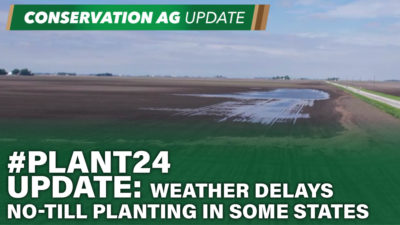I talk a lot about soil health and land treatment (if you ask my wife and kids, they’ll probably tell you I talk a lot about everything). I’ve lost count of all the presentations I’ve made about the benefits of conservation practices.
Depending on the audience, I can focus on the positive impact these practices have — whether it’s the increased microbial activity in a tablespoon of soil, improvements to the health of the environment as a whole, or the benefits seen in producers’ bottom lines. I can sing the praises to many different tunes.
I also write this blog, put out videos and do a podcast. So needless to say, sometimes I start to worry that I’m just repeating myself. Every once in a while, I struggle to find something new to say instead of just repeating the same old things over and over again.
This is the rut I found myself in earlier this week.
In an effort to turn this around (or at least avoid the problem) I hopped in the truck the other day to go look at our cover crops. As I mentioned in my last blog, we finally got some moisture, enough to kick-start our covers and justify buying our first load of calves to turn out for grazing (we turned mama cows out on some of our covers late last week).
While I was driving down the road, I noticed my neighbors working up wheat ground — the same rain that kicked our cover crop grazing plan into gear had a lot of folks around home burning diesel and clocking hours on their tractors to try and kill off any weeds that could potentially poke their heads up in their cultivated ground.
That’s when it hit me. Why not show a little compare and contrast between our land and theirs?
Here is what our wheat ground looks like:

We planted a 17-species cover crop mix. These plants are sequestering carbon in the soil, building organic matter and feeding the subsoil microbial community. By helping increase microbial activity and hold the soil structure together, we are taking in more moisture when it rains, even with the moisture required to grow the covers. With the residue on the ground, we are controlling erosion and reducing the temperature of the soil.
Here is what our neighbors land looks like:

Their cultivation has brought the moisture they received up to the surface where most of it will be lost to evaporation. They have exposed the fungus and other microbes in their soil that help hold soil particles together to the elements, collapsing the soil structure and removing the “glue” that holds open pore space.
The ground is hotter, more suspectable to crusting when it does rain (thus taking in less moisture) and more prone to erosion. They also have disrupted the soil’s subsoil microbial community, which can affect not just moisture loss but also nutrient availability for future crops.
This is what we also currently have in some of our wheat ground:

Our cover crops allow us additional grazing opportunities, making us money. True, we did do a herbicide “burndown” when we planted our covers after harvest, and we had the initial purchase cost of seed, but we will burn around 3 gallons of diesel less per acre than our neighbors to produce a winter wheat crop this year using soil health methods.
All this while also experiencing some of our highest wheat yields these last few years doing soil health practices compared to what we produced in the past when we farmed “conventionally.” We also have been spending roughly half of what we used to on fertilizer.
This what our neighbors have in their wheat field:

They have much more invested in iron than we do and they will burn more fuel and time before they plant this fall (this is their second pass on the land this summer with at least two more likely to follow). What they have in the field right now will sit in the barn and require maintenance while what we have in the field will go to market and eventually into our bank account.
Everybody has a different reality and a difference experience. For us, soil health practices are working out pretty well. You can see the pictures for yourself.







Post a comment
Report Abusive Comment